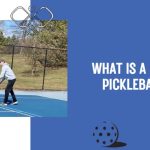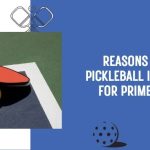The pickleball elbow is a common injury for players that can lead to severe discomfort and inhibit performance. It occurs when the tendons and muscles around the elbow become overworked or strained due to repetitive motion.
In this complete guide, you will learn how to prevent pickleball elbow and various treatments available if an injury occurs. We will discuss the symptoms of pickleball elbow, what causes it, and 12 treatment options for managing pain and restoring mobility.
Let’s dive in!
What Are the Symptoms of Pickleball Elbow?
The pickleball elbow is a common injury that affects many pickleball players. It is also known as “Tennis Elbow or Lateral Epicondylitis“. It is caused by overuse and strain of the muscles and tendons that attach to the outer elbow.
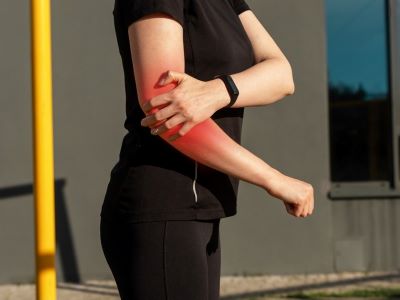
The main symptom of pickleball elbow is pain on the outside of the elbow, especially when gripping the paddle or hitting backhand shots. The pain may also radiate to the forearm and wrist. Pickleball elbow can be prevented by using proper mechanics, warming up before playing, stretching after playing, and using a lightweight paddle and ball.
What Causes Pickleball Elbow?
Pickleball elbow is an overuse injury affecting the tendons that attach to the outer elbow. It is caused by repetitive motions and poor mechanics that stress the elbow joint, especially when hitting backhand shots.
Some factors that can contribute to pickleball elbow are using a heavy paddle, a hard ball, a tight grip, or a long backswing. Pickleball elbow can cause pain, soreness, weakness, and difficulty gripping the paddle or performing other tasks involving the elbow.
12 Treatments for Pickleball Elbow
Pickleball elbow is a painful condition that can affect your performance and enjoyment of the game. Fortunately, there are several ways to treat and prevent pickleball elbow. Here are 12 treatments for pickleball elbow that you can try:

1. Stop and Rest
The first and most crucial step is to stop playing pickleball and rest your elbow until the pain subsides. This will give your elbow a chance to heal and recover from the inflammation and damage caused by pickleball elbow.
Resting your elbow is the most important step to treat pickleball elbow, as continuing to play or strain your elbow can worsen your condition and delay your recovery.
2. Ice Your Elbow
Add ice to your elbow for 10 to 15 minutes every few hours to reduce inflammation and swelling. This will help you reduce swelling and pain in your elbow by constricting the blood vessels and numbing the nerves ending.
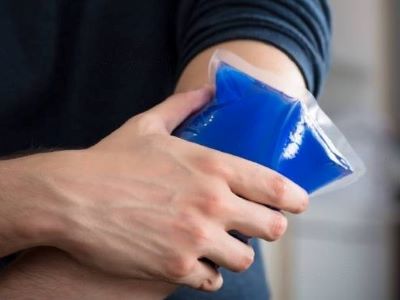
You should always put a cloth or a towel between your skin and the ice to prevent frostbite or skin damage. Icing your elbow can help relieve the symptoms of pickleball elbow and speed up your healing process.
3. Fix Your Mechanics
One of the leading causes of pickleball elbow is poor technique, especially on backhand shots. Make sure you hit the ball in front of your body, use your legs and core to generate power, limit your backswing, and follow through smoothly. Consider consulting a coach or a pro to help you improve your mechanics.
4. Use an Elbow Brace
An elbow brace or strap can provide support and compression to your elbow, reducing the stress on the tendons. You can wear it during playing or daily activities to ease the pain and promote healing. There are different types of braces or bands that you can use, such as:
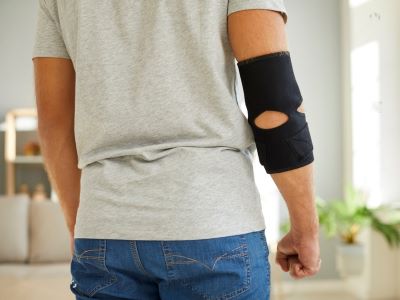
- A compression sleeve that covers your entire forearm and elbow and provides even pressure and warmth to reduce inflammation and pain.
- An elbow strap that wraps around your forearm just below your elbow and applies pressure to the tendon to relieve tension and pain.
- A brace that immobilizes your elbow and prevents you from bending or twisting it in a way that could aggravate your condition.
You should consult a doctor or a physical therapist to find out which type of brace or band is best for you and how long you should wear it. Wearing an elbow brace can help protect your elbow from further injury and promote the healing of your pickleball elbow.
5. Take Over-the-Counter Pain Relievers
If the pain is mild to moderate, you can take over-the-counter pain relievers such as ibuprofen, naproxen, or acetaminophen. Follow the label directions, and do not exceed the recommended dosage. Consult your doctor before taking any medication if you have medical conditions or allergies.
6. Use the Best Grip Size for You
Your grip size can affect how much pressure you put on your elbow. A grip that is too small or too large can cause you to squeeze the paddle too hard or lose control. To find the best grip size for you, measure the distance from the tip of your ring finger to the bottom crease of your palm.
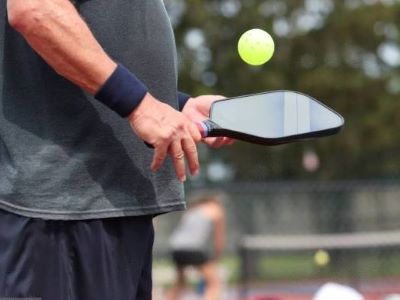
This number in inches is your ideal grip size. You can also use an overgrip or a heat shrink sleeve to adjust your grip size.
7. Try a Kinetic Pickleball Paddle
A kinetic paddle has small metal balls inside the head that move when you hit the ball. It creates a shock-absorbing effect that reduces the vibration and impact on your arm and elbow. A kinetic paddle may help you prevent or treat pickleball elbow by providing more comfort and stability.
8. Improve Your Strength
Strengthening your forearm, wrist, and elbow, muscles can help you prevent and treat pickleball elbow by improving your endurance and reducing fatigue. You can do exercises such as wrist curls, reverse wrist curls, hammer curls, pronation/supination, and squeeze balls to improve your strength.
9. Improve Your Flexibility
Stretching your forearm, wrist, and elbow muscles can help you prevent and treat pickleball elbow by improving your range of motion and blood flow. You can do stretches such as wrist flexion/extension, wrist rotation, elbow flexion/extension, and shoulder rotation before and after playing pickleball.
10. Go to Physical Therapy
If your pain is severe or persistent, you may benefit from physical therapy. A physical therapist can evaluate your condition, provide manual therapy, prescribe exercises, apply ultrasound or electrical stimulation, and educate you on preventing further injury.
11. Check the Weight of Your Paddle
The weight of your paddle can affect how much force you exert on your elbow when hitting the ball. A too-heavy or too-light paddle can cause you to swing too hard or too soft, resulting in more stress on your elbow.
Your paddle’s ideal weight depends on your preference, skill level, and physical condition. Lighter paddles (7 to 8 ounces) are easier to maneuver and control, while heavier paddles (8 to 9 ounces) provide more power and stability.
12. Go See a Doctor
If none of the above treatments work or your pain is accompanied by other symptoms such as numbness, tingling, weakness, fever, or infection, you should see a doctor as soon as possible. You may have a more severe condition, such as a fracture, nerve damage, arthritis, or infection, that requires medical attention.
FAQs
The pickleball elbow is an overuse injury caused by the repetitive stress of playing pickleball. It is characterized by pain, swelling, and tenderness in the elbow joint.
To fix a pickleball elbow, it is essential to rest the affected area and avoid putting any strain on the elbow. Applying ice to the area can help reduce inflammation and pain, while an over-the-counter anti-inflammatory medication may help. Stretching exercises can help strengthen the muscles around the joint and improve flexibility. Finally, wearing an elbow brace or sleeve during activity may provide additional support and protection.
Tennis elbow is a condition caused by overuse of the muscles and tendons in the elbow, which can be exacerbated by playing pickleball. The repetitive motion of swinging a pickleball paddle strains those muscles and tendons, leading to inflammation and pain.
Conclusion
Pickleball elbow is a common injury among pickleball players, but this condition can be managed with the proper preventive and treatment measures.
By understanding the signs and causes of pickleball elbow and learning about effective treatments such as rest, icing, stretching exercises, and strength training exercises, you can reduce your risk of developing this condition.
With proper care and dedication to prevention methods, such as proper technique and warm-up before playing pickleball, you can stay safe and healthy in the game for years to come. By following the steps provided above, you can prevent and treat pickleball elbow and enjoy playing pickleball without pain.
Remember to listen to your body and take care of your elbow. Happy pickleballing!

I am a professional physiotherapist and the author of the BallSportsPro. I worked with athletes of all levels, from amateur to professional, and i helped them overcome injuries and improve their performance. I am a certified Pickleball instructor and has been playing the sport for over 10 years.

